
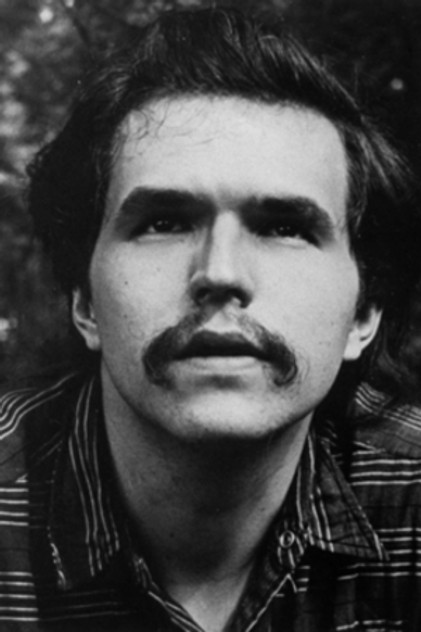
Stan Brakhage
Born: January 14, 1933
Died: March 9, 2003
in Kansas City, Missouri, USA
Died: March 9, 2003
in Kansas City, Missouri, USA
Stan Brakhage is one of the most influential filmmakers in American avant-garde cinema, noted for his unflinching social commentaries and technical innovations. Over his nearly 40-year career, he has made over 200 films of varying length. He made his first film, Interim (1952) at age 18 after dropping out of college. Brakhage films seek to change the way we see. They encourage viewers to eschew traditional narrative structure in favor of pure visual perception that is not reliant on naming what is seen; rather his goal is to create a more visceral visual experience, for he believes that a "stream-of visual-consciousness could be nothing less than the pathway of the soul." To this end, his films are shot in highly sensual colors and utilize minimal soundtracks.
His work can be divided into distinct periods. His first short films explored the properties and possibilities of light. In many of his experimental ventures, Brakhage has forgone traditional cinematography in favor of working directly with the film stock itself. He has occasionally painted, inked, scratched and dyed images onto it; he has also tried pasting organic objects on the film. His most famous example is the 1963 short Mothlight in which he glued moth wings onto the stock. Some of his early films were based on his most intimate experiences that included making love to his new bride--depicted on negative film--in Wedlock House: An Intercourse (1959), and an attempt to bring his dead dog back to life with a camera in Sirius Remembered (1959). During the 1960s, Brakhage's iconoclastic views were celebrated for their poetry, but during the '70s, his focus changed to social issues and he alienated many supporters with such disturbing film series as the "Pittsburgh documents" in which he presented many gruesome views of inner city life with films such as Act of Seeing with One's Own Eyes (1971) which was shot in a morgue. He also continued with autobiographical material with the "Sincerity/Duplicity series. During the 1980s, Brakhage's focus again changed--this time he became intrigued with creating truly "abstract" films such as Arabics (1982) which consists of brilliant bursts of colored light which he claims, represent "envisioned music." In addition to filmmaking, Brakhage also wrote books about films and filmmaking and also served as a teacher.
His work can be divided into distinct periods. His first short films explored the properties and possibilities of light. In many of his experimental ventures, Brakhage has forgone traditional cinematography in favor of working directly with the film stock itself. He has occasionally painted, inked, scratched and dyed images onto it; he has also tried pasting organic objects on the film. His most famous example is the 1963 short Mothlight in which he glued moth wings onto the stock. Some of his early films were based on his most intimate experiences that included making love to his new bride--depicted on negative film--in Wedlock House: An Intercourse (1959), and an attempt to bring his dead dog back to life with a camera in Sirius Remembered (1959). During the 1960s, Brakhage's iconoclastic views were celebrated for their poetry, but during the '70s, his focus changed to social issues and he alienated many supporters with such disturbing film series as the "Pittsburgh documents" in which he presented many gruesome views of inner city life with films such as Act of Seeing with One's Own Eyes (1971) which was shot in a morgue. He also continued with autobiographical material with the "Sincerity/Duplicity series. During the 1980s, Brakhage's focus again changed--this time he became intrigued with creating truly "abstract" films such as Arabics (1982) which consists of brilliant bursts of colored light which he claims, represent "envisioned music." In addition to filmmaking, Brakhage also wrote books about films and filmmaking and also served as a teacher.
Movies for Stan Brakhage...

Title: Please Leave a Message: Anthology Film Archives Voicemails Through the Ages
Released: September 21, 2022
Type: Movie
This very special film features a carefully curated selection of some of the priceless messages that have graced Anthology’s voicemail system over the years. From the historically important to the utterly (and sublimely) absurd, they feature a cast of characters ranging from legendary avant-garde filmmakers, scholars, and other cultural figures to civilians whose legend has (until now) been confined to the offices of Anthology, thanks precisely to their witty, eloquent, eccentric – or in some cases unforgettably psychotic – voicemails. We’ve toyed with the idea of sharing these messages in some form for years, and the “Imageless Films” series provides a perfect pretext.

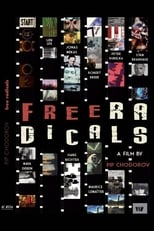
Title: Free Radicals: A History of Experimental Film
Character: Himself
Released: July 24, 2011
Type: Movie
Experimental filmmaker Pip Chodorov traces the course of experimental film in America, taking the very personal point of view of someone who grew up as part of the experimental film community.

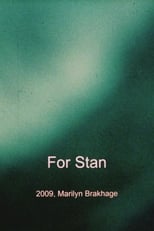
Title: For Stan
Character: Himself
Released: April 7, 2009
Type: Movie
For Stan is a tribute film shot by Marilyn Brakhage of her husband at work with his camera in the late 1980s and early 90s – illuminating their close relationship.


Title: Notes on Marie Menken
Character: Himself (archive footage)
Released: April 20, 2006
Type: Movie
A look at avant-garde filmmaker Marie Menken.


Title: A Visit to Stan Brakhage
Character: Himself
Released: May 3, 2003
Type: Movie
A portrait of Brakhage shot in Victoria, British Columbia, just a few months before his death. Filmmaker Pip Chodorov illustrates Brakhage's reflections on his art with short passages from his hand-painted films.

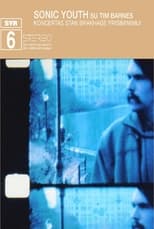
Title: Sonic Youth: Koncertas Stan Brakhage Prisiminimui (April 12, 2003)
Character: Self (archive footage)
Released: April 12, 2003
Type: Movie
Filmed April 12, 2003 at a benefit concert held at and for The Anthology Film Archives, the international center for the preservation, study, and exhibition of avant-garde and independent cinema. In addition to screening films for the public, AFA houses a film museum, research library and art gallery. The event, which raised money for the Archives and celebrated the life and work of avant-garde film maker Stan Brakhage, featured Sonic Youth providing an improvised instrumental collaboration with silent Brakhage’s films. The band performed with drummer/percussionist Tim Barnes (Essex Green, Jukeboxer, Silver Jews).

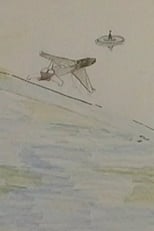
Title: Keeping an Eye on Stan
Released: March 3, 2003
Type: Movie
The late, legendary experimental filmmaker Stan Brakhage is the subject of this video portrait by his friends Ken Jacobs and Nisi Jacobs.The video closely documents Brakhage's last visit to New York, and captures scenes of his family life in Boulder, Colorado, affording a view of the artist that is at once candid and casual.

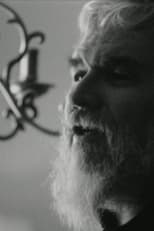
Title: Encomium
Character: Self
Released: January 1, 2003
Type: Movie
I shot this roll of film at a party Bard College threw when it awarded Stan Brakhage an honorary degree. A few days after he died, I dug it out and watched it again. I had meant to make Brakhage a gift of the roll, but instead it became a farewell.

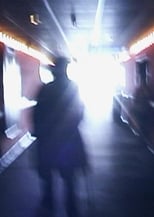
Title: Stan Brakhage Exits the Cinema and Enters the Light of Day
Character: Himself
Released: April 4, 2002
Type: Movie
A brief short of Phil Solomon and Stan Brakhage going to the movies in the spring of 2002.

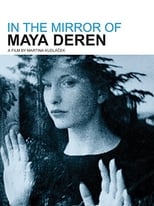
Title: In the Mirror of Maya Deren
Character: Himself
Released: March 15, 2002
Type: Movie
Documentary about the life of avant-garde filmmaker Maya Deren, who led the independent film movement of the 1940s.


Title: Vakvagany
Character: Himself
Released: March 5, 2002
Type: Movie
Hungarian home movies are examined by the likes of James Ellroy and Stan Brakhage for evidence of family problems.

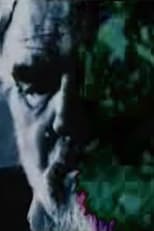
Title: Garden Path
Released: August 9, 2001
Type: Movie
A depiction of the creative process of hand-painting film giant, Stan Brakhage. Inspired by Monet's paintings from Giverny, Brakhage's luminous abstract painting transforms the screen into an oneiric botanical landscape. Brakhage's painted loops leap out of black and white footage of the master at work, painting and printing.

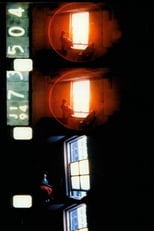
Title: As I Was Moving Ahead Occasionally I Saw Brief Glimpses of Beauty
Character: Self
Released: November 5, 2000
Type: Movie
A compilation of over 30 years of private home movie footage shot by Lithuanian-American avant-garde director Jonas Mekas, assembled by Mekas "purely by chance", without concern for chronological order.


Title: Looking at Forest of Bliss
Character: Himself
Released: May 13, 2000
Type: Movie
Director Robert Gardner and legendary filmmaker Stan Brakhage share an in-depth viewing of Gardner's ethnographic masterwork, Forest of Bliss. The film is shown in its entirety, with Gardner occasionally pausing to elucidate, and Brakhage brilliantly observing tonality, poetic imagery, life, death, the unconscious, and, well, just being damned insightful. - dred


Title: Keepers of the Frame
Character: Himself
Released: March 1, 1999
Type: Movie
An exploration of film preservation and restoration in the United States.


Title: Brakhage
Character: Himself
Released: September 17, 1998
Type: Movie
BRAKHAGE explores the depth and breadth of the filmmaker’s genius, the exquisite splendor of his films, his magic personal charm, his aesthetic fellow travelers, and the influence his work has had on generations of other creators. While touching on significant moments in Brakhage’s biography, the film celebrates Brakhage’s visionary genius, and explores the extraordinary artistic possibilities of cinema, a medium mostly known only for its commercial applications in the form of narratives, cartoons, documentaries, and advertising. BRAKHAGE combines excerpts from Brakhage’s films and films of other avant-garde filmmakers (eg, George Kuchar, Jonas Mekas, Willie Varela, Bruce Elder, and others); interviews with Brakhage, his friends, family, colleagues, and critics; archival footage of Brakhage spanning the past thirty-five years; and location shooting in Boulder, Colorado and New York.


Title: I Met Stan Brakhage (At Moma, N.Y.C)
Released: January 1, 1998
Type: Movie
Stan Brakhage shows his new films at MoMA in New York. Before that, he said hello to me, Jonas Mekas, Birgit, the Anthology team and others. Later, we return home by metro.

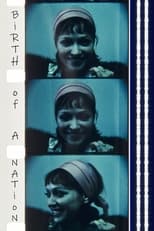
Title: Birth of a Nation
Character: Self
Released: August 6, 1997
Type: Movie
Filmmaker Jonas Mekas films 160 underground film people over four decades.

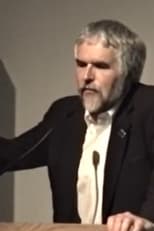
Title: Stan Brakhage on Gregory Markopoulos
Released: July 8, 1997
Type: Movie
Brakhage's lecture at the Whitney Museum is a thoughtful meditation on another friend and fellow filmmaker Gregory Markopoulos.


Title: Stan Brakhage on Jim Davis
Released: June 1, 1997
Type: Movie
A very personal lecture on filmmaker and friend Jim Davis.

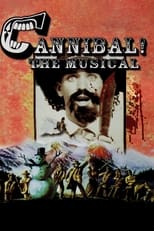
Title: Cannibal! The Musical
Character: Noon Sr.
Released: August 30, 1996
Type: Movie
Heading through Colorado Territory in search of gold and women, Alferd Packer and his group of bemused companions find themselves lost, starving and musically inspired by the obstacles they confront along the way, including a die-hard Confederate cyclops, a trio of surly trappers, a tribe of Japanese-speaking "Indians," and ultimately, each other.


Title: As Is Was
Released: January 1, 1995
Type: Movie
This film was shot the same weekend as Z (Zee Not Zed), when Stan Brakhage was visiting University of Rhode Island, where Marjorie Keller was teaching at the time. They get some coffee, then go for a walk on a beach in an old whaling harbor.

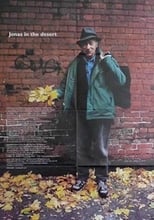
Title: Jonas in the Desert
Character: Self
Released: January 1, 1994
Type: Movie
Not a documentary in the strictest sense of the word. Rather, it is a journey through the world of the artist Jonas Mekas - one of the exponents of independent U.S. movies; founder and director of the New York Anthology Film Archive.

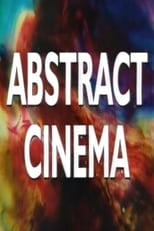
Title: Abstract Cinema
Character: Himself
Released: June 24, 1993
Type: Movie
Several well-known and pioneering abstract filmmakers discuss the history of non-objective cinema, the works of those that came before them and their own experiments in the field of visionary filmmaking.


Title: Z (Zee Not Zed)
Released: January 1, 1993
Type: Movie
Stan Brakhage with a movie camera. Winter seascapes.

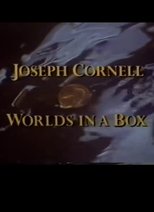
Title: Joseph Cornell: Worlds in a Box
Character: Self
Released: November 29, 1991
Type: Movie
This is a 1991 documentary film about the legendary artist and filmmaker, Joseph Cornell, who made those magnificent and strange collage boxes. He was also one of our great experimental filmmakers and once apparently made Salvador Dali extremely jealous at a screening of his masterpiece, Rose Hobart. In this film we get to hear people like Susan Sontag, Stan Brakhage, and Tony Curtis talk about their friendships with the artist. It turns out that Curtis was quite a collector and he seemed to have a very deep understanding of what Cornell was doing in his work.


Title: Watunna
Character: Narrator
Released: January 1, 1989
Type: Movie
The creation myths of the Yekuana Indians of the Orinoco region of Venezuela provide a transparent look at the poetic process by which human beings construct meaning from their experience. Narrated by Stan Brakhage. Music and sound by Bruce Odland.


Title: I... Dreaming
Released: October 1, 1988
Type: Movie
Phrases of Stephen Foster, set to music by Joel Heartling, are set to film in this autobiographical piece: a solitary female voice, occasionally joined by a chorus, sings phrases of sorrow as we watch a solitary man in shadows in an unadorned house: he stretches out, he picks his feet, he walks across a room, he rocks in a chair. Occasionally he watches two young children at play; the film sometimes speeds up. Handwritten words, like "dark void" and "waiting longing," cross the screen. Film and phrases often come in short bursts. Outdoor it looks gray and cold.

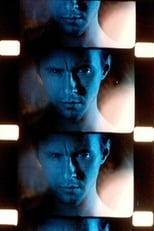
Title: Faust's Other: An Idyll
Released: January 1, 1988
Type: Movie
“Faust Part 2” reveals the modern Faust in a romantic interlude, an idyll (from the Greek idein, "to see"); also, a journey of the id. A sense of story is inferred through the complex interweaving of human gesture, expression, and bodily movement within vibrantly shifting colours and rhythmic development, creating multiple levels of metaphorical meaning. A collaborative work with paintings by Emily Ripley and soundtrack by Joel Haertling.

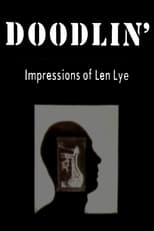
Title: Doodlin': Impressions Of Len Lye
Character: Self
Released: January 1, 1987
Type: Movie
This documentary, made seven years after the death of legendary filmmaker and kinetic artist Len Lye, tells Lye's story: from being a young boy staring at the sun, to travels around the Pacific and life in New York. It includes excerpts from many of his films, and interviews with second wife Ann and biographer Roger Horrocks. Len Lye himself is often heard, outlining his ideas of the ‘old brain’ and how Māori and Aboriginal art influenced his work. The grandeur of his ideas are only matched by their scale, with steel sculptures designed to be "at least 20 foot high".

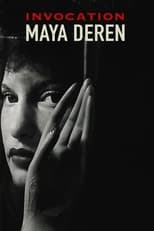
Title: Invocation: Maya Deren
Character: Himself
Released: April 24, 1986
Type: Movie
Maya Deren is a legend of avant-garde cinema. This authoritative biography of the charismatic filmmaker, poet and anthropologist features excerpts from her pioneering Meshes of the Afternoon and her unfinished documentary on Haiti, interviews with Stan Brakhage and Jonas Mekas, and recordings of her lectures. Narrated by actress Helen Mirren, this definitive documentary offers startling insights into one of the most intriguing, accomplished figures in cinema history.


Title: Reflecting Thought: Stan Brakhage
Character: Self
Released: January 1, 1985
Type: Movie
Stan Brakhage is a film maker whose work is shown mainly at film festivals. His work has been likened to poetry. Brakhage explains his techniques and his motivation.

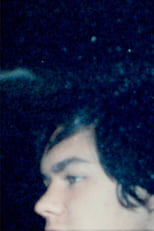
Title: Tortured Dust
Released: April 13, 1984
Type: Movie
The culmination of a series of autobiographical films that Brakhage made about his family (collectively known as The Book of Family), Tortured Dust was shot as the filmmaker's children from his first marriage were beginning to leave the house, and edited during Brakhage and his first wife Jane's impending separation. The first half concentrates on Brakhage's teenage sons as they move around the cabin that has been their home for almost 20 years, and the second half turns towards the filmmaker's three daughters.

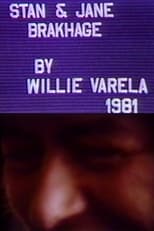
Title: Stan & Jane Brakhage
Character: Self
Released: March 31, 1981
Type: Movie
A poignant portrait of Stan and Jane Brakhage visiting Juarez.


Title: Grand Opera: An Historical Romance
Character: Himself (voice)
Released: January 1, 1978
Type: Movie
Grand Opera marks a stock-taking of Benning's work and his life, presenting a personal and artistic autobiography woven together with a series of events dealing with the historical development of the number pi, Benning's travels, and homages to Michael Snow, Hollis Frampton, George Landow (Owen Land), and Yvonne Rainer.

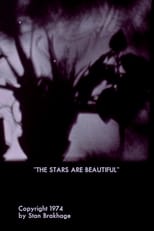
Title: The Stars Are Beautiful
Character: Narrator (voice)
Released: November 19, 1974
Type: Movie
We move back and forth between scenes of a family at home and thoughts about the stars and creation. Children hold chickens while an adult clips their wings; we see a forest; a narrator talks about stars and light and eternity. A dog joins the hens and the family, while the narrator explains the heavens. We see a bee up close. The narrator suggests metaphors for heavenly bodies. Scenes fade into a black screen or dim purple; close-ups of family life may be blurry. The words about the heavens, such as "The stars are a flock of hummingbirds," contrast with images and sounds of real children.

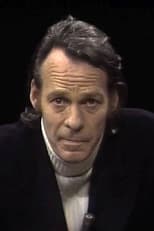
Title: Screening Room
Character: Himself
Released: November 1, 1972
Type: TV
Independent filmmakers are given a chance to show and discuss their work on a commercial (ABC-TV) affiliate station.


Title: Reality's Invisible
Character: Himself
Released: April 19, 1972
Type: Movie
Fulton made the film during his brief time at Harvard, where he had been invited to teach by Robert Gardner, his friend and collaborator (Fulton would later serve as a cinematographer on Gardner’s 1981 documentary Deep Hearts, among others). Reality’s Invisible could be described as a portrait of the Carpenter Center, yet it is a portrait of an extremely idiosyncratic and distinctive sort. Fulton moves us through the concrete space of the Center’s Le Corbusier-designed building—the only structure by the architect in North America—but, more centrally, presents us footage of students making and discussing their work alongside figures like Gardner, theorist Rudolf Arnheim, artist Stan Vanderbeek, filmmaker Stan Brakhage, and graphic designer Toshi Katayama.

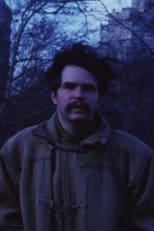
Title: Brakhage Crosses Central Park
Character: Self
Released: December 1, 1969
Type: Movie
Clip from Walden.

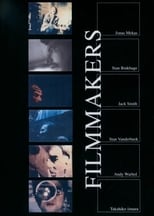
Title: Filmmakers
Character: Himself
Released: January 1, 1969
Type: Movie
Iimura creates a short self-portrait as well as brief portraits of five of his peers: Brakhage, Vanderbeek, Smith, Mekas and Warhol. In each portrait, Iimura attempts to copy the styles and traits of each artist (Vanderbeek's constantly moving camera; Mekas' experiments with film speed; Warhol's use of flashes of white against a black background), while briefly commenting on the images being shown. The film serves effectively as an introduction to the film styles of these artists.


Title: Diaries, Notes, and Sketches
Character: Self
Released: March 1, 1968
Type: Movie
An epic portrait of the New York avant-garde art scene of the 60s.

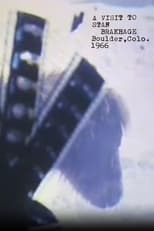
Title: A Visit to Stan Brakhage
Released: January 1, 1966
Type: Movie
In late 1966 I visited Stan Brakhage in Rollinsville, Colorado. This is a portrait of Stan at home, with his family, his animals, and the surroundings, 9000 feet high.

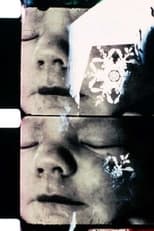
Title: The Art of Vision
Character: Man
Released: May 20, 1965
Type: Movie
A deconstruction of Dog Star Man that takes the four rolls and shows them first combined, then each combination of three rolls, then each combination of two rolls, then each individual roll. The plot is of a man who goes up a mountain with a dog to chop down a tree but has some unspecified transcendental experience while he is there.

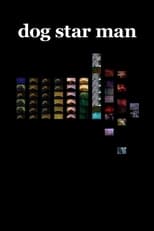
Title: Dog Star Man
Released: February 22, 1965
Type: Movie
Experimental film following a cycle of seasons as well as the stretch of a single day as a man and his dog slowly ascend a mountain.

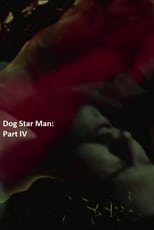
Title: Dog Star Man: Part IV
Released: November 17, 1964
Type: Movie
A man is supine on a mountain side. Images rush past of nature and a stained glass saint. An infant is born. We see a lactating nipple. Images include a mountain peak, farm buildings, a tree stump, a fire, a crawling baby, and the sun. The man falls and rolls. Then, later, he swings his ax.

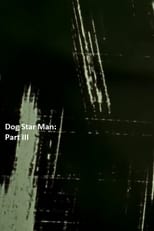
Title: Dog Star Man: Part III
Released: November 17, 1964
Type: Movie
Sexual intimacy. Three kinds of images race past, superimposed on each other sometimes: two bodies, a man and a woman's, close up, nude - patches of skin, wisps of hair, glimpses of a face and genitalia; strips of celluloid with lines and squiggles scratched on them; and, close-up shots of what appear to be the insides of living bodies - a heart beating, muscle and sinew and tissue wet with fluids. The exterior and interior of desire.

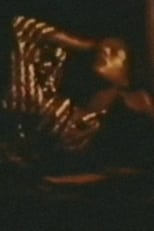
Title: Song 1
Released: March 20, 1964
Type: Movie
SONG 1: Portrait of a lady (the Songs are a cycle of silent color 8mm films by the American experimental filmmaker Stan Brakhage produced from 1964 to 1969).


Title: Dog Star Man: Part I
Released: March 18, 1963
Type: Movie
From a murky landscape, a wooded mountain emerges. We watch the sun. We see a bearded man climbing up the mountain through the snow. He carries an ax, and he's accompanied by a dog. His labors continue. There is no soundtrack. Images rush past - water, trees, and surfaces too close up to distinguish. He struggles. A fire burns. Nature, in long shots and magnified, is formidable and silent. It's tough going; he carries on. In a capillary, blood flows.

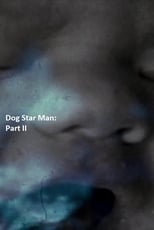
Title: Dog Star Man: Part II
Released: January 1, 1963
Type: Movie
A man, accompanied by a dog, struggles through snow on a mountain side. We see film stock blister; drawn square shapes appear. Then, we see an infant's face. The images of struggling climber, baby, blurred film stock, large snow flakes, and what may be microscopic details of matter are superimposed on each other, one dominating the frame briefly to be replaced by another. As the man falls in the snow and tries to regain his feet, the baby continues to appear, first with eyes closed. Alternately, images rush by - montages of paper cutouts and life under a microscope.

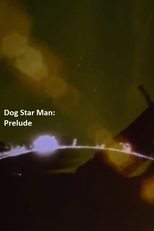
Title: Prelude: Dog Star Man
Released: April 15, 1962
Type: Movie
A creation myth realized in light, patterns, images superimposed, rapid cutting, and silence. A black screen, then streaks of light, then an explosion of color and squiggles and happenstance. Next, images of small circles emerge then of the Sun. Images of our Earth appear, woods, a part of a body, a nude woman perhaps giving birth. Imagery evokes movement across time. Part of the Dog Star Man series of experimental films.

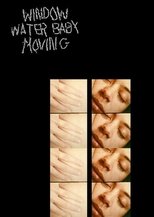
Title: Window Water Baby Moving
Character: Self (uncredited)
Released: August 2, 1959
Type: Movie
On a winter's day, a woman stretches near a window then sits in a bathtub of water. She's happy. Her lover is nearby; there are close ups of her face, her pregnant belly, and his hands caressing her. She gives birth: we see the crowning of the baby's head, then the birth itself; we watch a pair of hands tie off and cut the umbilical cord. With the help of the attending hands, the mother expels the placenta. The infant, a baby girl, nurses. We return from time to time to the bath scene. By the end, dad's excited; mother and daughter rest.


Title: Wedlock House: An Intercourse
Released: April 27, 1959
Type: Movie
We see a film negative of a nude couple embracing in bed. Then, back in regular black and white images, we see them alone and together, clothed, at home. It's night, she sees his reflection in the window, she closes the drapes. After sex, again in a black and white negative, they sit, smoke, have coffee. They kiss, she smiles. They light candles. The images are often quick, the camera angles occasionally are off kilter; the room is sometimes dark and sometimes lit, as if lit by the rotating of a searchlight. The images again appear in negative when they return to bed.

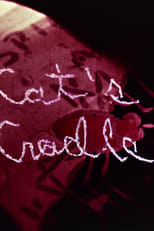
Title: Cat's Cradle
Character: Self
Released: January 1, 1959
Type: Movie
Images of two women, two men, and a gray cat form a montage of rapid bits of movement. A woman is in a bedroom, another wears an apron: they work with their hands, occasionally looking up. A man enters a room, a woman smiles. He sits, another man sits and smokes. The cat stretches. There are close-ups of each. The light is dim; a filter accentuates red. A bare foot stands on a satin sheet. A woman disrobes. She pets the cat. Preserved by the Academy Film Archive in 2006.

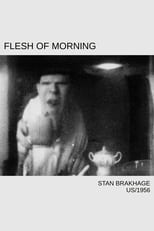
Title: Flesh of Morning
Released: January 6, 1956
Type: Movie
Short B/W film about the textures of the human skin and household objects, showing Brakhage in the morning as reality distorts around him. Revised in 1986.


Title: The One Romantic Venture of Edward
Released: January 1, 1956
Type: Movie
The young man, played by Stan Brakhage, gets himself into a seriously comic mix-up by indulging in semi-sexual fantasies, and allowing the fantasies to take over. This is the best of my very early films and includes my first footage.

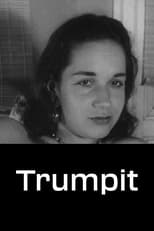
Title: Trumpit
Released: January 1, 1956
Type: Movie
Featuring a card game played on the body of a naked woman, Lawrence Jordan portrays male sexual frustration while slyly satirizing Hollywood reaction shots.

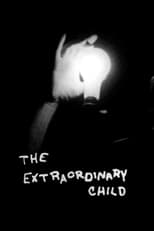
Title: The Extraordinary Child
Released: November 12, 1954
Type: Movie
The Extraordinary Child applies his developing style to broad slapstick. His friends from the previous films and the director himself play out a riotous farce about an overgrown baby who steals his father’s cigars. Everyone mugs hilariously. The movie could be taken as another example of the Romantic notion of the artist as a monstrous child or misfit, or a parody of the same rather than the personal confessional statement seen so often in these film movements.
